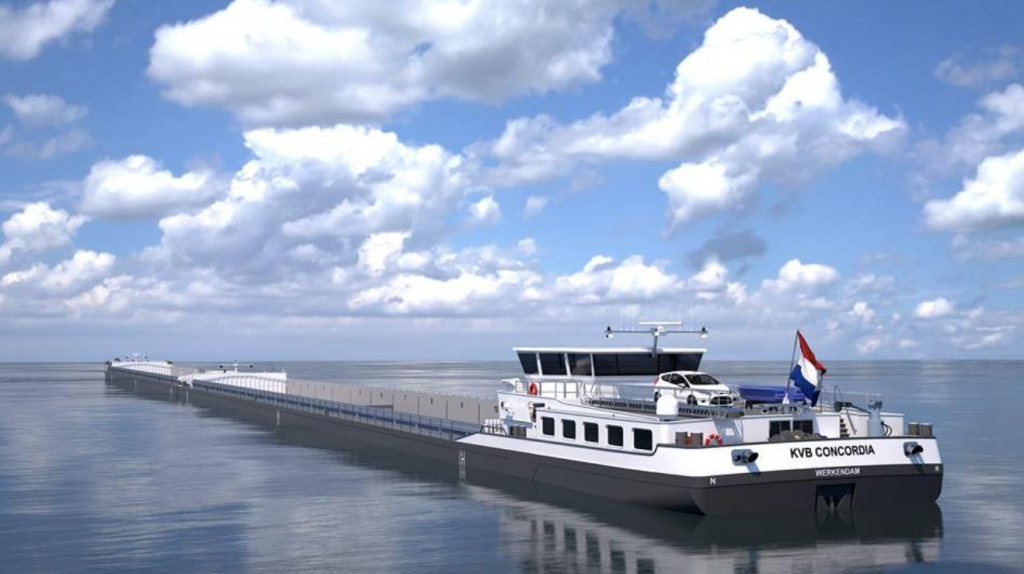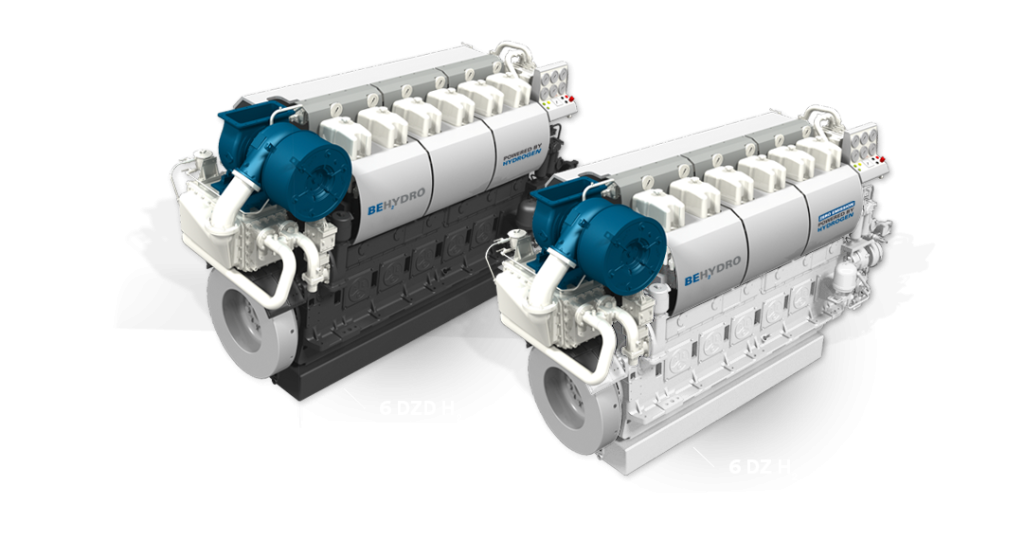On Thursday 06 February five new hydrogen vessels were granted a subsidy by the Dutch government under Maritime Masterplan program. Two methanol and two carbon capture projects received subsidy too. This first call included a total budget of €85 million of which €40 was allocated to hydrogen vessels. For those who missed out, a next call is planned for next year. Among this years winners are the following projects.
H2ESTIA: A Zero-Emission Coaster
H2ESTIA is a 5,000 DWT hydrogen-powered coaster, developed by a consortium led by NIM. It features a 1.5 MW LT-PEM fuel cell, a 1 MW battery, and electric propulsion. The ship carries 200m³ of liquid hydrogen (11 tons) and boasts a 1,700 NM range, assisted by e-sails and a waste heat recovery system. This project is a major step toward sustainable coastal shipping.

Hydrogen-Powered River Cruiser
A hydrogen-powered river cruise vessel is under development for operations on the Rhine and Danube. It measures 110m x 11m and reaches speeds of up to 22 km/h. This project introduces hydrogen as a clean energy source for the river cruise industry, reducing emissions on inland waterways.
Hybrid H2 ICE-FC Dredging Vessel
The Gaasterland, a deep-suction dredger motor barge, is being upgraded with a hybrid hydrogen internal combustion engine (ICE) and fuel cell system. This retrofit aims to reduce emissions while maintaining operational efficiency. The project involves Mineralis B.V., NPS Driven B.V., TNO, and other industry leaders.
Columbus Zero One: Hydrogen-Powered Inland Transport
Columbus Zero One is a small, zero-emission hydrogen-powered barge designed for transporting construction materials between the IJsselmeer and Randstad. The ship operates on compressed hydrogen (350 bar), setting a benchmark for sustainable inland shipping.
Hydro Navis: Liquid Hydrogen Transport
Hydro Navis is a new zero-emission vessel designed for steel plate transport in wind farm construction. It features a cryogenic liquid hydrogen tank, ensuring efficient and clean operations. The project is supported by NPRC, Hydro-Nova, Marin, NIM, and Concordia Damen Shipyard.

MOBY NL: Methanol-Powered Bunkering Ship
MOBY NL is a newly built bunkering vessel operating in the Amsterdam-Rotterdam-Antwerp (ARA) region. The 135m x 11.45m methanol tanker exceeds 6,000 GT and features a dual-fuel methanol propulsion system. The project is backed by Victrol, Shipping Technology, NIM, and other key partners.
Methanorms: Geophysical Survey Vessel
Methanorms is a DP-1 geophysical survey vessel designed for efficient execution and real-time monitoring. Its success lies in prior research, scalability, and regulatory compliance. It serves as a model for future survey vessels operating with lower environmental impact.
BLUE HORIZON: Carbon Capture for LNG Tankers
Coral Energy, an LNG tanker (115m x 22m, 13,501 GT), is being equipped with a carbon capture system to reduce CO₂ emissions. This project demonstrates how carbon capture can enhance the sustainability of LNG-powered vessels.
ME2CC: Compact Carbon Capture for LNG Ships
The Maritime Efficient & Easy Carbon Capture (ME2CC) project is focused on developing compact carbon capture systems for LNG-powered vessels. The first implementation will be on MV Kvitbjorn, a Samskip-operated ship. This technology could bridge the gap toward zero-emission shipping.
A Step Toward a Cleaner Future
These projects highlight the rapid advancements in hydrogen and alternative fuel shipping. It is good to see these projects receive capex support. This is the way to develop green hydrogen shipping. After Norway leading the way it is good to see the Dutch following and we can only hope for more.
